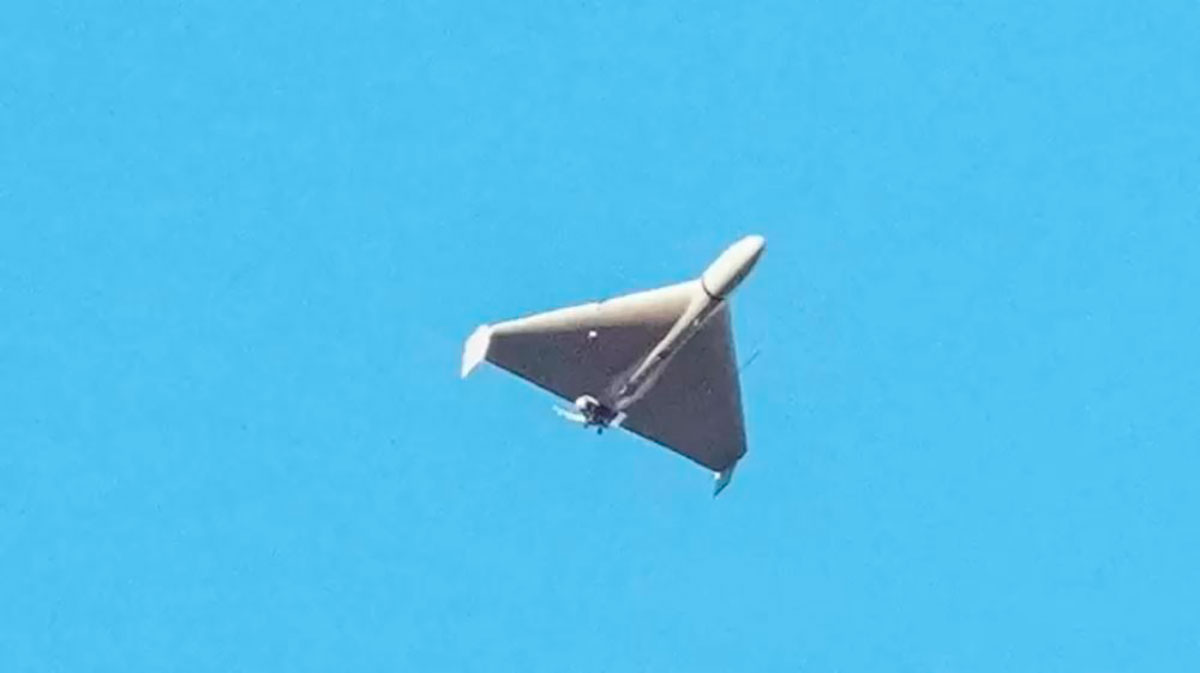Russia has launched a new wave of drone strikes in the center of the capital, Kyiv, in a new push for Moscow’s campaign against Ukraine’s infrastructure. According to the city’s mayor, Vitali Klitschko, the so-called Iranian-made kamikaze drones were used in the attack.
It is not the first time that Russia uses these drones, called Shahed-136. In September the Ukrainian army reported several “devastating” attacks in the Kharkiv region with these same weapons. The Shahed-136, which Russia calls Geranium-2, are just one class of thousands of drones both sides are using in the war to spot enemy positions, launch missiles and directly fire artillery.
What are kamikaze drones
The Shahed-136 drones have been operational since 2021 and were developed by the Iranian state-owned company HESA. They were essentially designed to neutralize ground targets from a distance and their design allows them to evade air defenses. Before being used by the Russian military in Ukraine, they were first seen actively deployed in Houthi-controlled areas of Yemen.
Although Iran has not officially confirmed sending the Shahed-136s to Russia, Ukraine’s President Volodymyr Zelenskiy said Moscow had bought 2,400.
They are described as “kamikaze” or “suicide” drones, but experts say they are better defined as small cruise missiles. They are part of the calls ammunition “loitering” or loitering, that passively fly over the target area and attack only when they find the target.
But the attack tactic of kamikaze drones, as their colloquial name indicates, is to explode and destroy themselves on the enemy target to cause maximum damage.
How do kamikaze drone works
The drones have a range of about 2,500 km, so they can carry out long-distance attacks. They carry a small propeller motor in the rear part of the fuselage and their aerodynamics use the delta wing format. They measure 3.5 meters long, a wingspan of 2.5 meters and weigh almost 200 kilograms. At the front end they carry an explosive warhead and the guidance system works through an optical sensor.
but they have a relatively limited destructive capacity since they can only carry a payload of 50 kilos.
Drones are launched from platforms that use a rocket system to propel them in the early stages of flight.
The launch pad can be attached to both military and civilian vehicles, and each launcher can hold up to five drones at a time.
“They fly low and you can send them in waves. These drone swarmss are much more difficult to counter with air defenses”military expert Justin Crump told the BBC.
The Shahed-136 is also relatively cheap, costing around $20,000.
Justin Bronk, an air power specialist at the Royal United Services Institute (Rusi), a London-based think tank, told The Guardian newspaper that drones “They are difficult to intercept consistently.”
The expert explains that these drones have a slow aerodynamic speed, compared to cruise missiles, which means that air defenses will always have a chance to intercept them.
“Ultimately, they offer a way for Russia to cause more civilian and military casualties in Ukraine, but it will not turn the tide of the war,” the analyst says.
Ukrainian air defense teams around Kyiv have been using anti-aircraft missiles to try to shoot them down.
At the beginning of October, Ukraine’s armed forces said they were intercepting 60% of all incoming Shahed-136 drones.
Ukraine also have kamikaze drones
Ukraine also has kamikaze drones, including the American made Switchblade model.
It has recently carried out attacks with these drones against a Russian military base in Saky, in western Crimea, against an air base near Sevastopol and against Russian ships in the port of Sevastopol.
Dr Marina Miron, a defense studies researcher at King’s College London, told the BBC: “If you look at the explosions in the attacks, they are quite small.”
“I suspect they are homemade kamikaze drones, to which explosives have been strapped.”
What other drones do Ukraine and Russia have?
Ukraine’s main military drone is the Turkish-made Bayraktar TB2. It is about the size of a small plane, carries cameras on board, and can be armed with laser-guided bombs.
At the start of the war Ukraine had a fleet of “fewer than 50” of these, says Dr Jack Watling of the Royal United Services Institute think tank.
Russia also uses the Orlan-10 “smaller and more basic”, which has chambers and can carry small bombs.

